Simply put, Aquaponics is an ecological and sustainable system of healthy organic food production without the use of soil. Aquaponics refers to a system that combines traditional aquaculture (raising aquatic animals such as snails, fish, crayfish, or shrimp in tanks) with hydroponics (growing plants in water) in a symbiotic environment. It is a system in which waste produced by farmed fish or other aquatic animals provides nutrients for plants. The plants are grown hydroponically and purify the water for the fish.
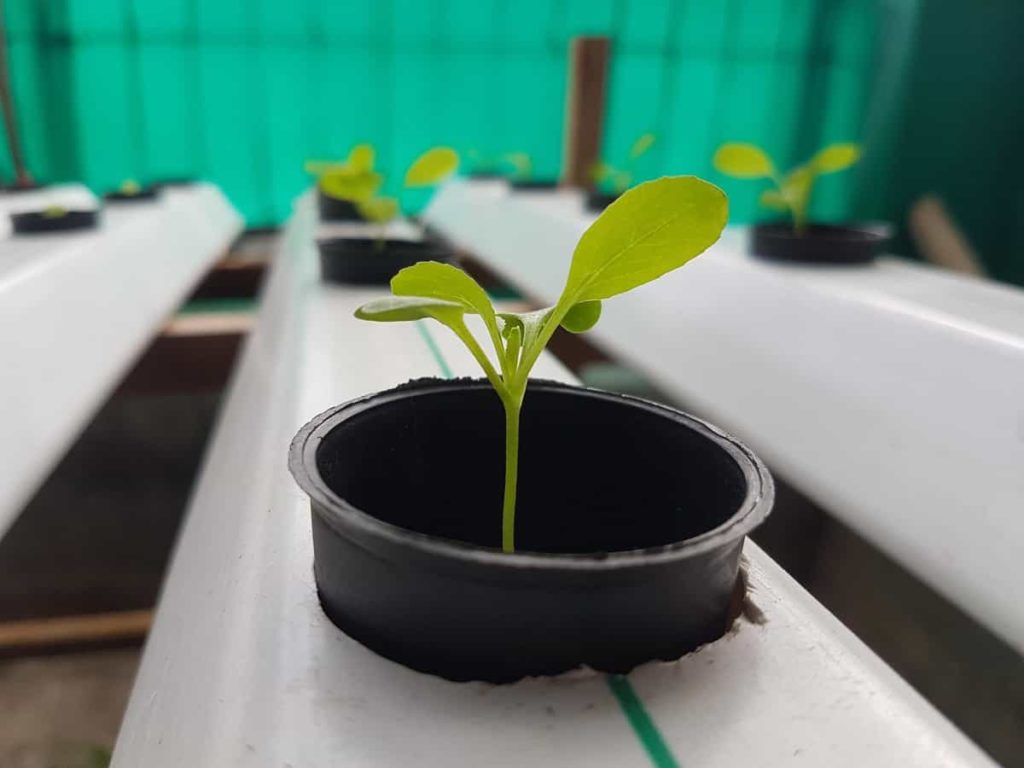
A guide to understand Aquaponics farming
How do I get started with Aquaponics?
1. Choosing the right location
The location where you place your Aquaponics system is critical to the way the plants and fish will grow. You should ensure that the room temperature is not too high and not too low, that there is enough light for the plants to produce food and that no wind or extreme weather conditions reach them. Also, ensure that no harmful chemicals can get into the water, as this can mean the death of your fish and your plants.
2. Build your media bed
The media bed can be built either on top of the fish tank or on the side of the tank. Your media bed will be the container in which the plants grow. It is also known as a flood table. You can use a large heavy-duty plastic tray or wooden pallet crate. It will need to be built on top of a stand that can support its weight.
3. Add the fish
Once your tank is cycled correctly, you can add fish.
4. Add the plants
Leafy plants grow best in an Aquaponics setup. However, if you have enough fish, you may also be able to grow fruit plants such as Peppers and tomatoes.
5. Maintain your system
Maintaining this setup is very easy. You will need to feed your fish a quality diet. You can use a simple flake food and give them occasional treats. Just be careful not to introduce any disease into the tank. For this reason, we advise against adding live food to the fish.
What is Aquaponics, and why is it important?
Aquaponics is a sustainable method of growing plants and aquatic animals. It is a symbiotic relationship between plants and marine animals, allowing small backyard and commercial farmers to grow nutritious organic crops and raise edible fish. Aquaponics is a growing farming system that combines aquaculture, or fish farming, and hydroponics, the method of growing plants without soil.
Both systems work together to create a closed loop that produces food without depleting environmental resources. Aquaponics is a sustainable food production system in which waste from fish tanks provides nutrients to the plants, and oxygen from the plants helps the fish thrive.
In case you missed it: Aquaponics Farming in the Greenhouse – a Full Guide
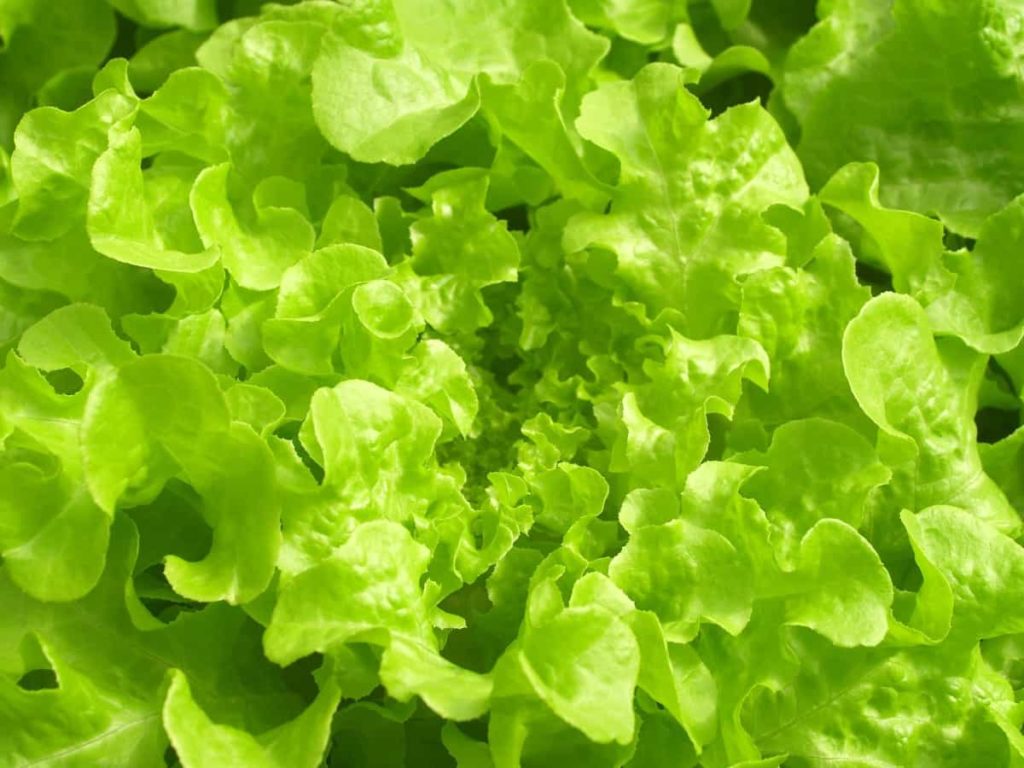
What are the benefits of Aquaponics farming?
- In an Aquaponics system, one grows vegetables and fish simultaneously. Moreover, the system is purely symbiotic, where the fish provide nutrients to the plants and, in turn, clean their water.
- An incredible amount of crops can grow in a very small space.
- The growth rate of crops is fast because an adequate amount of nutrients are available to them.
- Aquaponics is a way to grow your fish and vegetables simultaneously. You feed the fish, and the fish will feed your plants through their waste production.
- No fertilizers are needed as the fish provide rich nutrients to the plants.
- It results in healthy and organic vegetables.
- You can grow plants in a very small space and get a good harvest.
- Plants grow faster because they get a lot of nutrients from fish waste.
- Plant and fish production can be done in a controlled temperature environment.
What are the different types of Aquaponics systems?
Raft system
Also known as deep water culture (DWC), the raft system of Aquaponics is one of the most effective Aquaponics system designs. Due to its productivity, this system is often used in large-scale or commercial Aquaponics systems. This method best suits salad greens and other fast-growing, relatively low-nutrient plants. It is also most commonly used in large commercial scale systems.
Growing media-based Aquaponics
Media growing involves growing plants in inert planting media such as expanded clay pellets or shells to attach the plant. The media provides biological filtration (converting ammonia to nitrate) and mechanical filtration (removing solid waste) in the same system. Media-based systems are perfect for home and hobby-scale systems so you can grow various crops. In particular, large fruiting plants do well in addition to leafy greens, herbs, and other varieties.
Nutrient Film Technique (NFT)
NFT systems work by flowing nutrient-rich water through a narrow trough like a PVC pipe. Plants are then placed in holes drilled in this pipe, and the roots hang freely in this stream of water. This growing method works great for plants that need little help, such as strawberries (pictured) and other herbs. The best plants to grow in NFT include Chard, Lettuce, Mint, Basil, Sage, Mint, and Mustard.
Can you eat the fish from Aquaponics?
Depending on your chosen fish, the fish in your garden can be harvested for food. If you want to use fish as a food source in your system, research your choices carefully. Some fish species are ornamental and produce little or no harvest, and harvestable options grow at different rates and have different stocking densities. Make sure you choose a fish species that meets your needs.
What type of farming is Aquaponics?
- Aquaponics is the organic cultivation of plants and animals in a closed recirculating system (water tank), using water instead of mixing pots.
- It combines aquaculture (fish farming) and hydroponics (soil-less plant culture).
What are the objectives of the Aquaponics system?
Aquaponics provides an efficient way to conserve water in agriculture and is easier to operate than other hydroponic systems, requiring less supervision and providing better water quality.
- Fish – Fish play an important role in Aquaponics as their waste is a natural fertilizer for plants. To get the most growth from your fish, choose the best fish for your system and learn how to care for the fish in your system properly.
- Plants – Choosing the best plants to grow in your Aquaponics system is critical to the overall success of your system. So choose plants that are easy to grow and suitable for your location.
- Bacteria – The bacteria in an Aquaponics system can be found in biofilters, grow beds, and fish tanks. Bacteria convert fish waste into nutrients that plants can absorb. So it is important to maintain a healthy bacterial colony in your system.
What are the disadvantages of Aquaponics?
- Aquaponics is not suitable for all crops
- Cost of electricity
- Set up costs
- Expensive to upscale
- Technical knowledge required
- There aren’t many fish
- Daily maintenance is required
- It requires knowledge about fish, bacteria, and plant production
- It requires a reliable electrical source
How many fish do I need for Aquaponics?
How many fish you keep in your garden depends on your setup, the species of fish you choose, and your harvest needs. Large-scale Aquaponics farms designed to produce food for many people will, naturally, need more fish than a small backyard garden designed to produce food for just one.
If you choose a smaller type of fish, you will need more of them to fill your system than a larger one. Check stocking densities of different species to see how much per gallon will improve your garden’s production. Overstocking causes stress and disease, killing your fish and increasing costs. Understocking will cause stunted plant growth or death due to a lack of nutrients in the water.
In case you missed it: 16 Key Rules for Effective Hydroponic Farm/Garden Management: From Planning to Reduce Production Cost
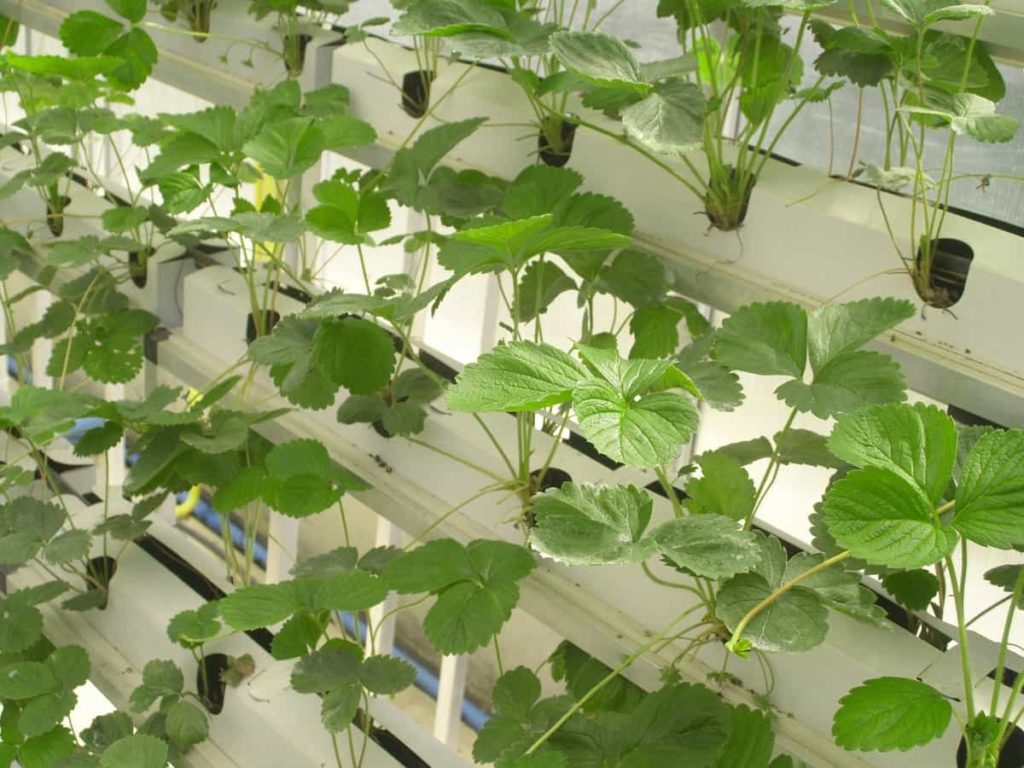
How does Aquaponics farming work?
Aquaponics relies on food introduced to the fish, which serves as the input to the system. As fish consume and digest this food, they turn it into urine and fecal matter rich in ammonia, which can be toxic to plants and fish in large quantities. Aquaponics systems contain fish in tanks, with wastewater pumped into gravel-filled beds for vegetables. The roots take up nitrates and grow like crazy.
Organic vegetables and fish provide a complete diet, which is a good thing in an uncertain world. You can grow fish and plants by keeping the fish in a large tank of water. You then pour the water from the tank into the gravel bed. Positive bacteria break down ammonia waste from fish to produce nitrogen, which helps plant growth.
After that, the filtered water goes to the growing bed and is returned to the fish tank. Some of the advantages of this farming are that it does not need the use of soil. You will benefit from this farming even on your unproductive land. You don’t have to worry about weeds growing on your land. You don’t even need to spread manure to fertilize.
Is Aquaponics farming profitable?
- Commercial Aquaponics systems can be profitable businesses when done at a certain scale.
- Start-up costs can be a challenge, but it’s a low maintenance cost, and the efficient system that delivers fresh organic produce much faster than any other farming method makes it an ideal investment.
What are the different plants you can grow in Aquaponics?
Almost all plants can be grown in Aquaponics. However, plants also have different nutrient, space, and light requirements. Depending on your Aquaponics setup, the plants that grow best in Aquaponics systems include vegetables, leafy greens, root vegetables, micro greens, fruiting plants, herbs, and flowers.
- Media-Based Aquaponics Systems: Lettuce, Tomatoes, Ginger, Eggplant, Cucumbers, and any other plant that will fit in your grow bed.
- Raft system: Lettuce, Swiss Chard, Bok Choy, Basil, Kale, Cabbage, Mint, Watercress, and other small root crops.
- Nutrient Film Technique (NFT): Parsley, Dill, Lettuce, Strawberry, Spinach, and other small root crops Plants.
What fish species are best for Aquaponics?
Fish play an important role as their waste becomes natural fertilizer for plants. Choose the best fish for your location, climate, and needs to get the most out of your fish.
- Edible fish: Tilapia, Carp, Catfish, Trout, Largemouth Bass, Salmon, Yellow Perch, Bluegill, Jade Perch, Barramundi
- Ornamental fish: Goldfish, Koi, Tetras, Guppies
- Other aquatic animals such as shrimp
Do you have to change the water in the Aquaponics system?
In a balanced system, never. You will need to add water to replace water lost to evaporation or transpiration (water is lost as the plant grows), but the system is fairly self-cleaning. Aquaponics systems are also more water efficient than traditional hydroponic systems (growing plants in water with chemical nutrients added). Aquaponics systems do not require complete water changes for a year or more, while hydroponic systems require complete water changes every three months.
What kills fish in Aquaponics?
- Too much ammonia can kill fish in Aquaponics, so you must regularly check your ammonia levels.
- If the problem persists, you must check all your system’s components to ensure your water has enough oxygen.
Does Aquaponics need fertilizer?
- Aquaponics mimics the natural balance of natural nutrients and does not require using fertilizers to grow healthy plants.
- In an Aquaponics system, the plants are fertilized by the fish waste in the water, and in turn, the plants filter the water before it is returned to the tank, keeping the fish healthy.
In case you missed it: Tilapia Fish Farming in Aquaponics – a Full Guide
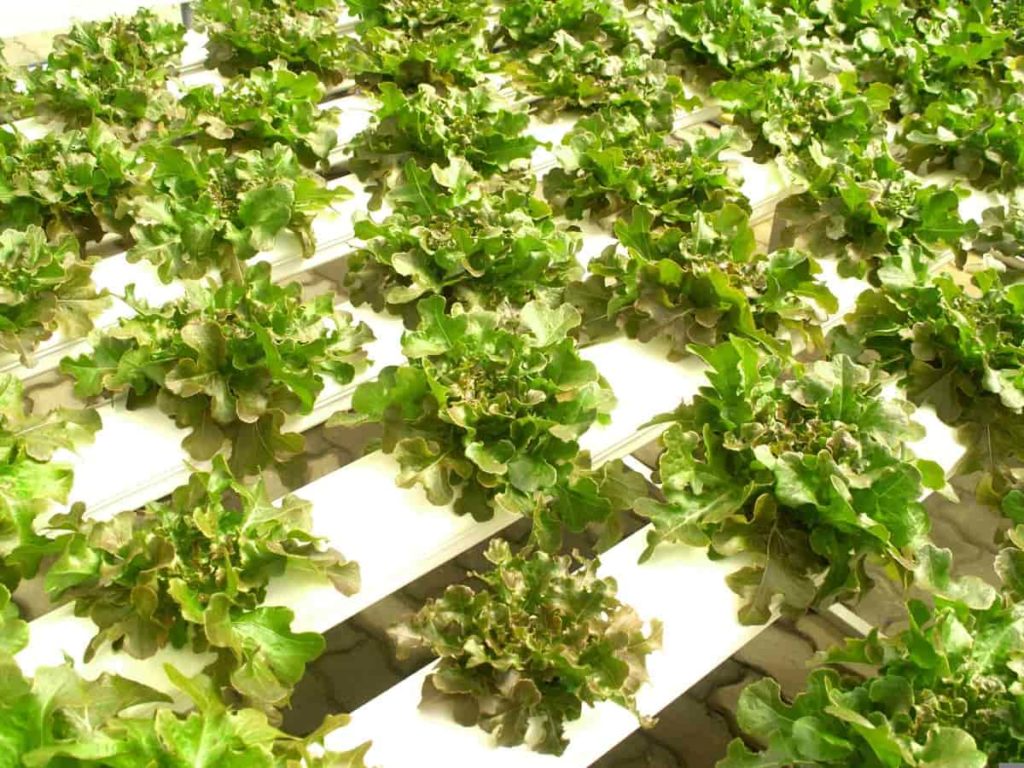
How is the Aquaponics system organic?
The Aquaponics system reflects what you put into your system. Since this system is self-contained recirculating, you don’t need to add harmful pesticides and chemicals. Any chemical additives can kill the fish in your system. Here are some reasons why Aquaponics farming is considered organic:
Aquaponics doesn’t use synthetic fertilizers
One of the benefits of having an Aquaponics system is that there is no need for artificial fertilizers to grow vegetables. Aquaponics uses fish waste as the primary source of nutrients for plants.
Chemical-free pest control
Aquaponics systems are not completely free of pests. A farmer may have to deal with pests that feed on crops from time to time. To deal with these occasional pests, many Aquaponics growers use natural pest control methods, such as hand removal, companion planting, insect netting, and the use of beneficial insects. The chemicals most gardeners use to remove pests can harm or kill the fish in the system.
No antibiotics or growth hormones
Many Aquaponics growers are into Aquaponics because they want to grow healthy organic crops. It includes ensuring the fish are not given growth hormones and feeding them with natural fish food and fish oil diets. Some farmers also use alternative fish feed such as duckweed, worms, insects, and leftover vegetables to feed their fish. In treating fish diseases, administering antibiotics can also affect the system’s overall health.
Therefore, most farmers use the common method of treating fish disease: isolate the diseased fish in a separate tank and use a salt bath solution. Vegetables grown in Aquaponics have a higher nutritional value than vegetables grown on land. The great thing about your Aquaponics farm/system is having control over what goes into your plants. You don’t have to trust farms that tell you the plants they grow are organic. You can be sure your plants are organic because you know what went into growing them.
What are the factors that determine a successful Aquaponics system?
The first and most important factor in having a successful Aquaponics garden is ensuring the fish are kept healthy. All fish need oxygen to survive and thrive; therefore, a good aeration system is essential. Water temperature is also very important for fish survival. Any abnormal rise or fall in temperature can cause distress to the fish. You should check what temperature is best for the type of fish you have.
The pH of water is neither acidic nor alkaline. If the pH rises or falls, it is important to address the cause immediately. It may be that the fish is overfed, and the uneaten fish feed disintegrates and collects at the bottom of the aquarium. By testing water quality regularly, you ensure that problems that arise are addressed long before they have a chance to cause real damage.
What are the four main parts of an Aquaponics system?
- Aquarium (fish tank)
- Grow beds for plants
- Moving water from the fish tank to the growing bed (water pumps are often used).
- A method of draining water from the grow bed to the fish tank (pipes are often used).
How much does it cost to set up an Aquaponics farm?
- The purpose of your Aquaponics system matters in the cost of each component because you are growing for a specific market and purpose.
- Commercial Aquaponics start-up costs for a one-acre growing area will range anywhere from $250,000 to $300,000.
Do you feed fish in Aquaponics?
Fish food is the primary input in an Aquaponics system. So not only is it important for fish health to provide fish with the right nutrition, but also because fish meal becomes fish waste, which is the primary source of nutrients that feed plants.
What is the best growing medium for Aquaponics?
- Lava Rock – Many Aquaponics growers use lava rock extensively as grow media because they are lightweight and have a large surface area. Lava rocks are generally pH neutral and porous and provide good drainage and aeration to the system.
- Expanded Clay – Also known as clay pebbles, Hydroton is a Lightweight Expanded Clay Aggregate. Hydroton is one of the most expensive growing media in Aquaponics, but it is an excellent option for growing plants.
- Expanded Shale – Another great Aquaponics grow media is the Expanded Shell. Expanded shells are porous, pH-neutral, and contain air pockets that provide additional surface area for bacteria.
- Gravel – Gravel is the least expensive Aquaponics grow media, but it is one of the most troublesome. It has less surface area than other growth media, making it difficult for bacteria to colonize.
In case you missed it: Aquaponics Training Centers In India
How do you maintain pH in Aquaponics?
pH is an important part of aquaculture. Setting it to the perfect level can be confusing because there are three organisms to care for your plants, your fish, and the bacteria in the water, each of which has different pH needs. A neutral pH of 6.8 to 7.2 is suitable for an Aquaponics garden. Due to fish waste, the pH will become acidic, and you will need to use Aquaponics-compatible pH adjusters.
If the pH level is not beneficial to the system that is too low or too high, the plants will not be able to absorb nutrients, and your fish will eventually die. It is important to monitor the pH level daily and keep it in the neutral range. You can find these adjusters at your local Aquaponics gardening supplier. Sometimes it is important to consider the hardness of the water when working out the pH. Fish don’t like sudden changes in pH, so try to lower or raise it gradually when adjusting.
How many fish can you keep in an Aquaponics system?
- In a smaller-sized tank, <50 gallons of water, we recommend stocking the tank with 1 inch of fish for every 1 gallon of water.
- For example, a 10-gallon tank can hold 10x 1″ fish or 5x 2″ fish.
What are the problems in Aquaponics farming?
- Insufficient water and oxygen: You must ensure your plants get plenty of water and oxygen. You want to check the roots to see if they are healthy or not.
- pH Level: Plants, fish, and bacteria are the three significant elements to consider when checking the pH level of your system. Each of these elements prefers a slightly different pH range, so keeping your system within the ideal pH range is important. Fish and bacteria prefer an alkaline environment, while plants prefer a more acidic environment.
- Insects/Pests: Insects can damage or kill your plants, so check the leaves of your plants for signs of pests.
- Iron levels: You must also check if your water has enough minerals, especially iron. You can supplement your Aquaponics system with chelate to keep your plants healthy.
- Too many fish in a tank – Too many fish will overcrowd your fish tank and make your system less efficient. It is advised not to overcrowd your fish tank and keep the stocking density low if you start your system. With low stocking density, you can easily handle your Aquaponics system and avoid shocks and collapse.
- Dead fish – Dead fish sometimes occur in Aquaponics systems, but if you have more than one dead fish, you need to check your system. Firstly, you need to check the ammonia level.
In case you missed it: Aquaponics Design, Types, Components, Advantages
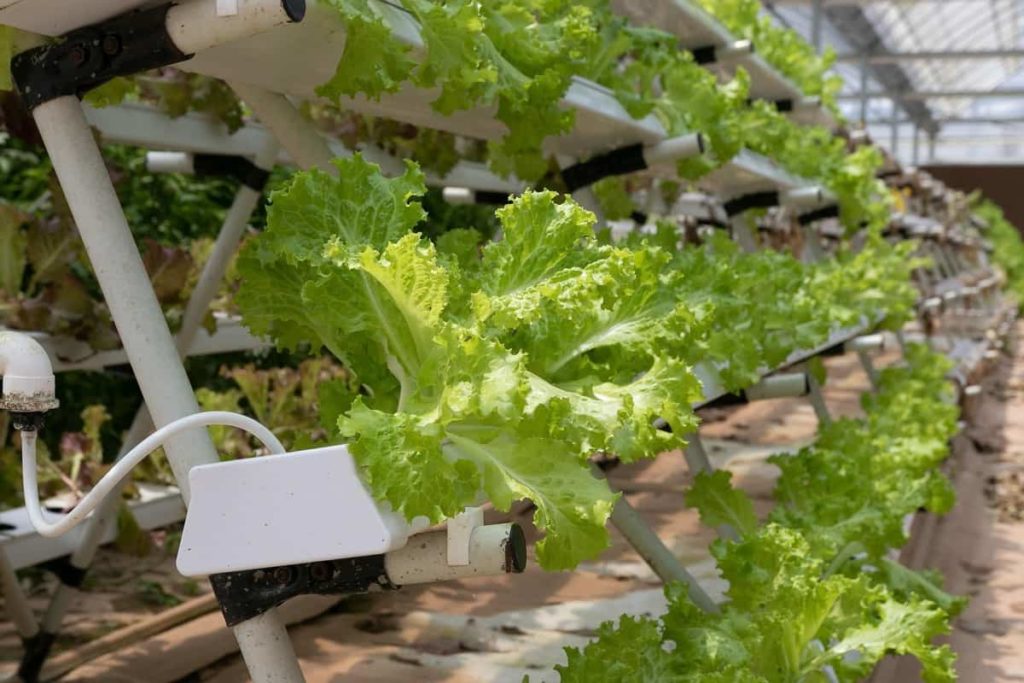
What are the pest problems in Aquaponics?
As with any farming method, Aquaponics can be a pest problem, and it’s important to consider using natural pest controls to establish and maintain your system. Maintaining your Aquaponics system is one way to ensure that the plants and fish in your system are safe. The common pests in the Aquaponics system are aphids, caterpillars, tomato hornworms, beetles, mealy bugs, and cutworms. There are several ways you can safely eliminate pests from your Aquaponics system without using chemicals: Here are some:
- Check your plants regularly for pests.
- Remove visible pests by hand that you find on your plants and destroy the pests.
- You can use bug netting in the Aquaponics system to make a physical barrier around the plants to prevent many insects from reaching your plants.
- You can plant insect repellants in your system to keep pests at bay. You can plant these plants along with your vegetables. Dill, Chives, Chrysanthemums, Catnip, Petunias, and Mint are plants that repel insects.
- Use beneficial insects like ladybugs, lacewings, and spiders. That can help prevent or control pests in your plants.
Can you grow flowers in Aquaponics?
- Vegetables and fruits aren’t the only things you can grow in an Aquaponics system.
- Flowers are also a good choice.
- Growing flowers with Aquaponics can be fun and easy.
Conclusion
Aquaponics is great hope for sustainable organic crop production, aquaculture, and water consumption. Instead of dumping fish waste into the ocean, it is recycled and used to grow plants. Water is recirculated in a closed system, reducing the consumption of this resource. Aquaponics is a simple activity that will provide you with essential vegetables and fish in a very short time. Therefore, follow the information mentioned above, and you will succeed greatly in Aquaponics farming.
- Types of Pesticides Used in Agriculture: A Beginner’s Guide
- Economical Aquaculture: A Guide to Low-Budget Fish Farming
- 15 Common Planting Errors That Can Doom Your Fruit Trees
- How to Make Houseplants Bushy: Effective Tips and Ideas
- Innovative Strategies for Boosting Coconut Pollination and Yield
- Pollination Strategies for Maximum Pumpkin Yield
- The Complete Guide to Chicken Fattening: Strategies for Maximum Growth
- Natural Solutions for Tulip Problems: 100% Effective Remedies for Leaf and Bulb-Related Issues
- Revolutionizing Citrus Preservation: Towards a Healthier, Greener Future
- Natural Solutions for Peony Leaf and Flower Problems: 100% Effective Remedies
- Maximizing Profits with Avocado Contract Farming in India: A Comprehensive Guide
- Natural Solutions for Hydrangea Problems: 100% Effective Remedies for Leaf and Flowers
- The Ultimate Guide to Choosing the Perfect Foliage Friend: Bringing Life Indoors
- From Sunlight to Sustainability: 15 Ways to Use Solar Technology in Agriculture
- The Ultimate Guide to Dong Tao Chicken: Exploring from History to Raising
- The Eco-Friendly Makeover: How to Convert Your Unused Swimming Pool into a Fish Pond
- Mastering the Art of Delaware Chicken Farming: Essentials for Healthy Backyard Flocks
- 20 Best Homemade Fertilizers for Money Plant: DIY Recipes and Application Methods
- How to Craft a Comprehensive Free-Range Chicken Farming Business Plan
- Brighten Your Flock: Raising Easter Egger Chickens for Beauty and Bounty
- How to Optimize Your Poultry Egg Farm Business Plan with These Strategies
- Subsidy for Spirulina Cultivation: How Indian Government Schemes Encouraging Spirulina Farmers
- Ultimate Guide to Raising Dominique Chickens: Breeding, Feeding, Egg-Production, and Care
- Mastering the Art of Raising Jersey Giant Chickens: Care, Feeding, and More
- Ultimate Guide to Raising Legbar Chickens: Breeding, Farming Practices, Diet, Egg-Production
- How to Raise Welsummer Chickens: A Comprehensive Guide for Beginners
- How to Protect Indoor Plants in Winter: A Comprehensive Guide
- Ultimate Guide to Grow Bag Gardening: Tips, Tricks, and Planting Ideas for Urban Gardeners
- Guide to Lotus Cultivation: How to Propagate, Plant, Grow, Care, Cost, and Profit
- Agriculture Drone Subsidy Scheme: Government Kisan Subsidy, License, and How to Apply Online
- Ultimate Guide to Raising Araucana Chickens: Breed Profile, Farming Economics, Diet, and Care
- Bringing Hydroponics to Classroom: Importance, Benefits of Learning for School Students
- Ultimate Guide to Raising Polish Chickens: Breed Profile, Farming Economics, Diet, and Care
- Ultimate Guide to Raising Australorp Chickens: Profile, Farming Economics, Egg Production, Diet, and Care
- Silkie Chicken Farming: Raising Practices, Varieties, Egg Production, Diet, and Care
- Sussex Chicken Farming: Raising Practices, Varieties, Egg Production, Diet and Care
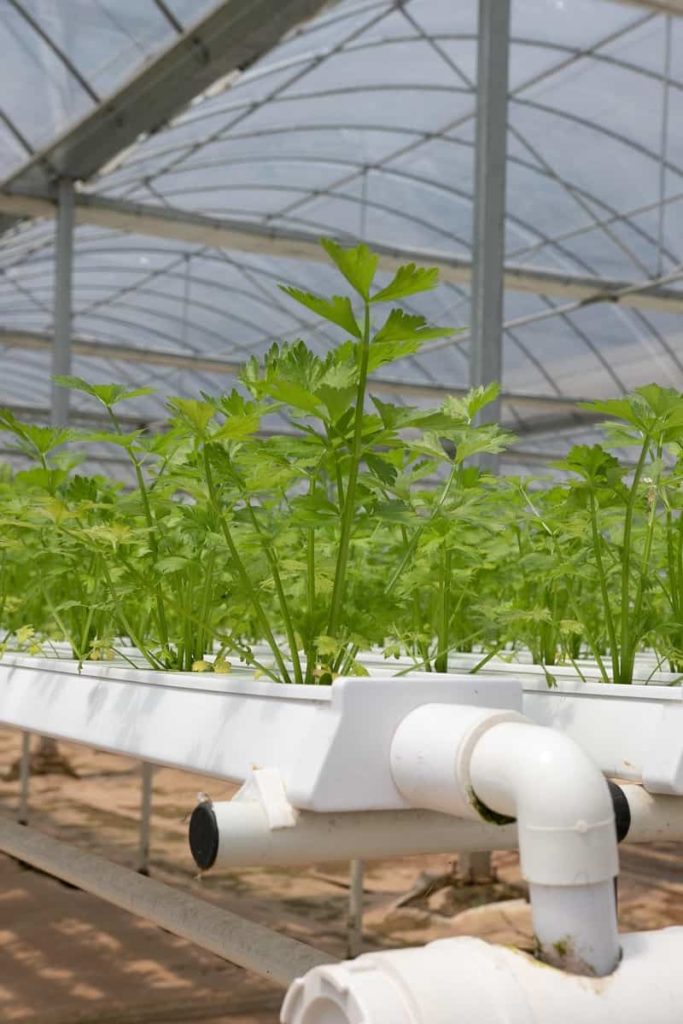
Hi your articles is motivating and encouraging me to venture in to hydroponics farming I need more information and living traings program to start with farming
Thanks for such a informative article for beginners
Looking forward for your kind support to start hydroponics